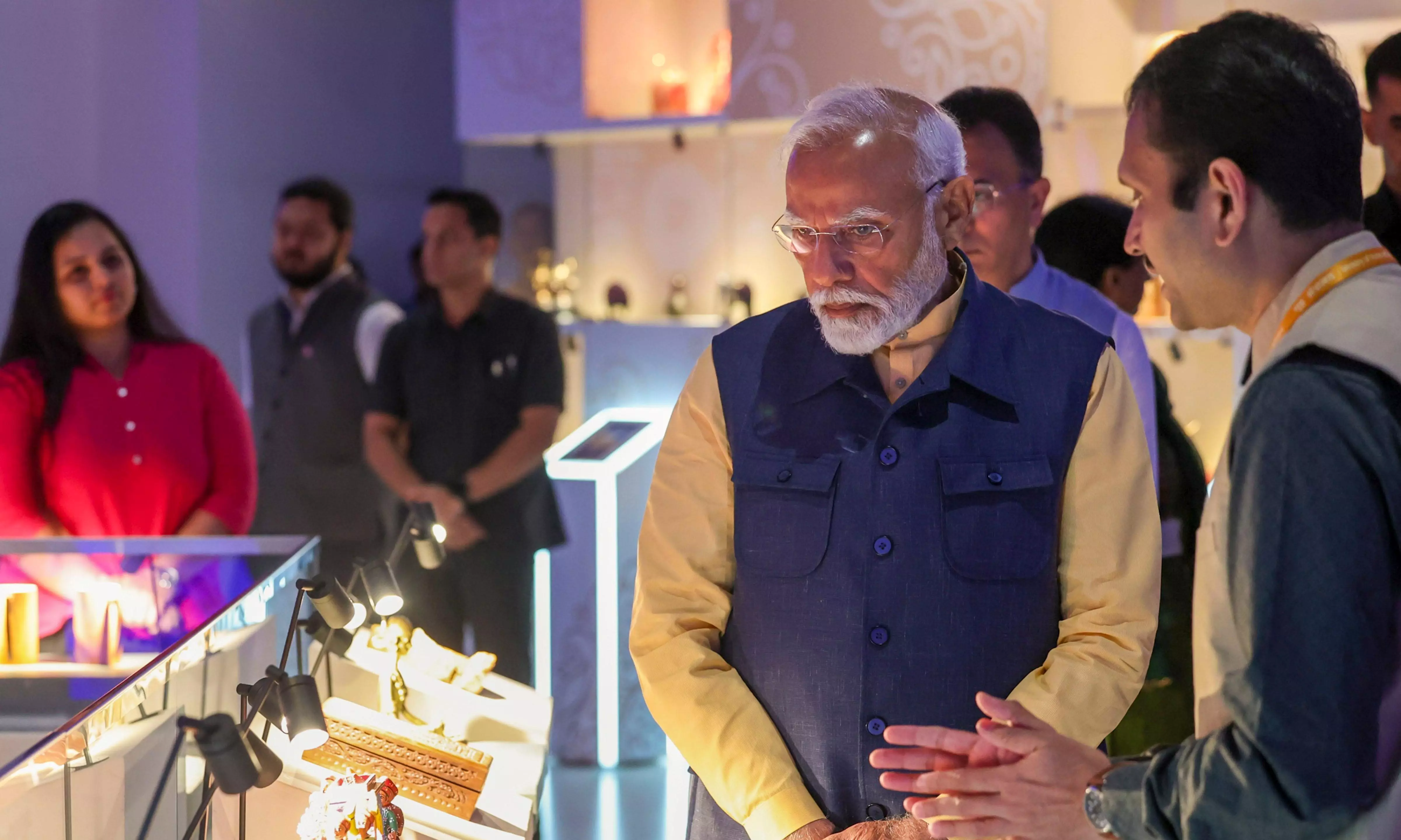PM GatiShakti Changing Face of India’s Infra: Modi

New Delhi: In a surprise move, Prime Minister Narendra Modi on Sunday visited the PM GatiShakti Anubhuti Kendra set up at the Bharat Mandapam on the third anniversary of the launch of the PM GatiShakti National Master Plan (PMGS-NMP). He appreciated the strides made in planning and execution of projects across the country due to GatiShakti and also lauded its adoption across sectors, thus adding speed to fulfill the vision of Viksit Bharat.
Earlier in the day, Modi lauded the completion of three years of the PMGS-NMP, saying it has emerged as a transformative initiative aimed at revolutionising India’s infrastructure and is driving faster and more efficient development across sectors.
Sharing a post by Union commerce and Industry Minister Piyush Goyal and a thread posted by MyGov, the PM wrote on X, "PM GatiShakti National Master Plan has emerged as a transformative initiative aimed at revolutionising India's infrastructure. It has significantly enhanced multimodal connectivity, driving faster and more efficient development across sectors."
"The seamless integration of various stakeholders has led to boosting logistics, reducing delays, and creating new opportunities for several people. Thanks to GatiShakti, India is adding speed to fulfill our vision of a Viksit Bharat. It will encourage progress, entrepreneurship, and innovation."
Earlier, in a post on X, Goyal wrote, "Today marks three years since the launch of the PM GatiShakti National Master Plan for multimodal connectivity by Modi Ji. By streamlining logistics and advancing connectivity, this path-breaking initiative ensures faster and more efficient project implementation. It continues to play a pivotal role in developing a modern, interconnected infrastructure network, strengthening the vision of building a Viksit Bharat."
The PM GatiShakti plan was launched on October 13, 2021, to provide multi-modal connectivity infrastructure to various economic zones. The PMGS-NMP incorporates the infrastructure schemes of various ministries and state governments, such as Bharatmala, Sagarmala, inland waterways, dry/land ports, and UDAN.
According to the commerce and industry ministry, it has resulted in numerous achievements across various sectors, significantly improving project planning, speed, and execution. It added that PM GatiShakti has successfully laid the groundwork for multi-modal connectivity and accelerated economic growth, bringing synergy across ministries and between states and UTs.
The PMGS-NMP has onboarded 44 Central ministries and 36 states/UTs, and a total of 1,614 data layers have also been integrated. To ensure data accuracy, key infrastructure ministries have finalized standard operating procedures for a three-tier system.
The ministry said that PM GatiShakti is being taken to the international level, and diplomatic engagements are underway between India and countries such as Nepal, Bangladesh, Sri Lanka, Madagascar, Senegal, and Gambia for promoting the use of PMGS-NMP and geospatial technology in the integrated planning of infrastructure.
The ministry of commerce and industry has released a special study on the achievements of the initiative over these three years. For instance, the Ministry of Road Transport and Highways (MoRTH) planned over 8,891 km of roads using the national master plan, while the Ministry of Railways used it to plan more than 27,000 km of railway lines. The Ministry of Petroleum and Natural Gas (MoPNG) streamlined the process for Detailed Route Surveys (DRS), reducing the time required to create reports from 6-9 months to just one day using electronic DRS.
Similarly, using the national master plan principles, a 13 GW renewable energy project from Leh (Ladakh) to Kaithal (Haryana) achieved optimal alignment of the Green Energy Corridor for inter-state transmission. Goa used the PMGS-NMP platform to develop a disaster management plan for flood-prone areas along the Amona River. The Uttar Pradesh government employed the State Master Plan (SMP) portal to identify locations for new schools in underserved areas via the Pahunch Portal. Gujarat planned its 300 km coastal corridor using the NMP, which reduced the number of NoC permissions required for clearance from 28 to 13, enhancing connectivity between four districts while boosting tourism.

